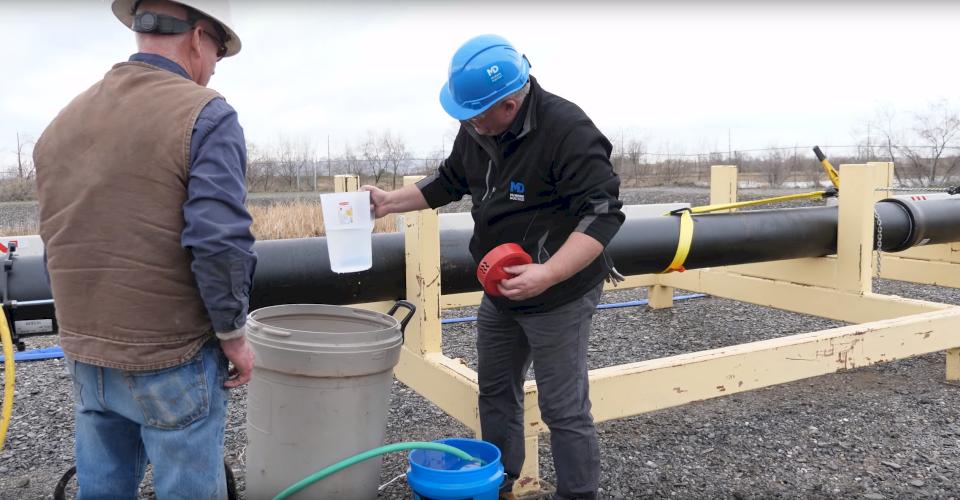Testing The Waters Safely: The Significance Of Hydrostatic Pressure Testing
In a world where engineering marvels dominate our landscapes and industries, ensuring safety and reliability is of paramount importance. One technique that plays a critical role in this regard is hydrostatic pressure testing. This method, often employed in various sectors ranging from pipelines to aerospace, involves subjecting objects and systems to liquid pressure to evaluate their structural integrity. By putting materials and equipment through rigorous assessments, hydrostatic pressure testing ensures that they can withstand the pressures they will encounter in real-world scenarios. In this article, we delve into the significance of hydrostatic pressure testing, its applications, and its role in maintaining safety across different industries.
Understanding Hydrostatic Pressure Testing
Hydrostatic pressure testing, at its core, involves the application of liquid pressure to test the strength and integrity of vessels, pipes, containers, and various other components. Water, often mixed with additives to prevent corrosion or freezing, is typically used as the testing medium. The principle behind this method is straightforward: if an object can withstand the internal pressure generated by the liquid, it can be deemed structurally sound and safe for use. This testing technique helps identify potential flaws, defects, or weaknesses that might otherwise remain unnoticed until they lead to catastrophic failures.
Applications Across Industries
- Oil And Gas Industry: Pipelines and equipment used in the oil and gas industry are subject to extreme conditions, including high pressures and corrosive substances. Hydrostatic pressure testing ensures that these components can withstand these harsh environments, reducing the risk of leaks, spills, and accidents that could have devastating ecological and financial consequences.
- Aerospace: The aerospace sector demands the highest levels of safety and reliability. Hydrostatic pressure testing is used to assess the integrity of aircraft components, such as fuel tanks and hydraulic systems. Ensuring these components can endure the pressures experienced during flight is essential to prevent mid-air failures.
- Construction: Building materials like concrete pipes and tanks need to endure the pressures of various fluids, be they water, sewage, or chemicals. Hydrostatic testing of these structures ensures their longevity and prevents potential leaks or collapses that could compromise safety.
- Manufacturing: Pressure vessels used in various manufacturing processes must be able to withstand internal pressures without compromising safety. Hydrostatic testing guarantees these vessels can function as intended without posing a risk to workers or the environment.
Safety First: The Importance Of Hydrostatic Pressure Testing
- Preventing Catastrophic Failures: Hydrostatic pressure testing helps identify weak points, cracks, or defects in materials and structures before they reach their operational limits. This proactive approach prevents catastrophic failures that could lead to environmental damage, loss of life, and massive financial losses. Hydrostatic pressure testing, often conducted in conjunction with flow testing, stands as a cornerstone of safety in various industries.
- Ensuring Compliance: Industries are often subject to regulatory standards and codes that mandate certain safety measures. Hydrostatic pressure testing provides a tangible and standardized way to demonstrate compliance with these regulations, reassuring stakeholders that safety is a top priority.
- Optimizing Design And Manufacturing: The insights gained from hydrostatic pressure testing can influence design improvements and manufacturing processes. Engineers can identify areas where materials or construction methods need enhancement, leading to more robust and durable products.
- Risk Mitigation: By conducting hydrostatic tests, companies can identify potential weak points and address them before products reach the market. This proactive approach reduces the risk of product recalls, liability claims, and reputational damage.
The Testing Process
The hydrostatic pressure testing process involves several key steps:
- Preparation: The object or system to be tested is thoroughly cleaned and inspected to ensure no foreign materials could interfere with the test.
- Filling And Pressurization: The object is filled with water or another suitable testing fluid, and pressure is gradually applied using a pump. The pressure is raised to a level significantly higher than the expected operational pressure.
- Stabilization And Inspection: The object is held at the test pressure for a designated period, during which any potential leaks or structural deformities are closely monitored. Inspection techniques such as visual examination, ultrasonic testing, and dye penetration are often used.
- Depressurization And Examination: After the specified duration, the pressure is gradually released, and the object is carefully examined again for any signs of failure or permanent deformation.
Pass/Fail Determination: Based on the inspection results, the object is deemed either “pass” if it meets the necessary criteria or “fail” if any defects or failures are detected.





